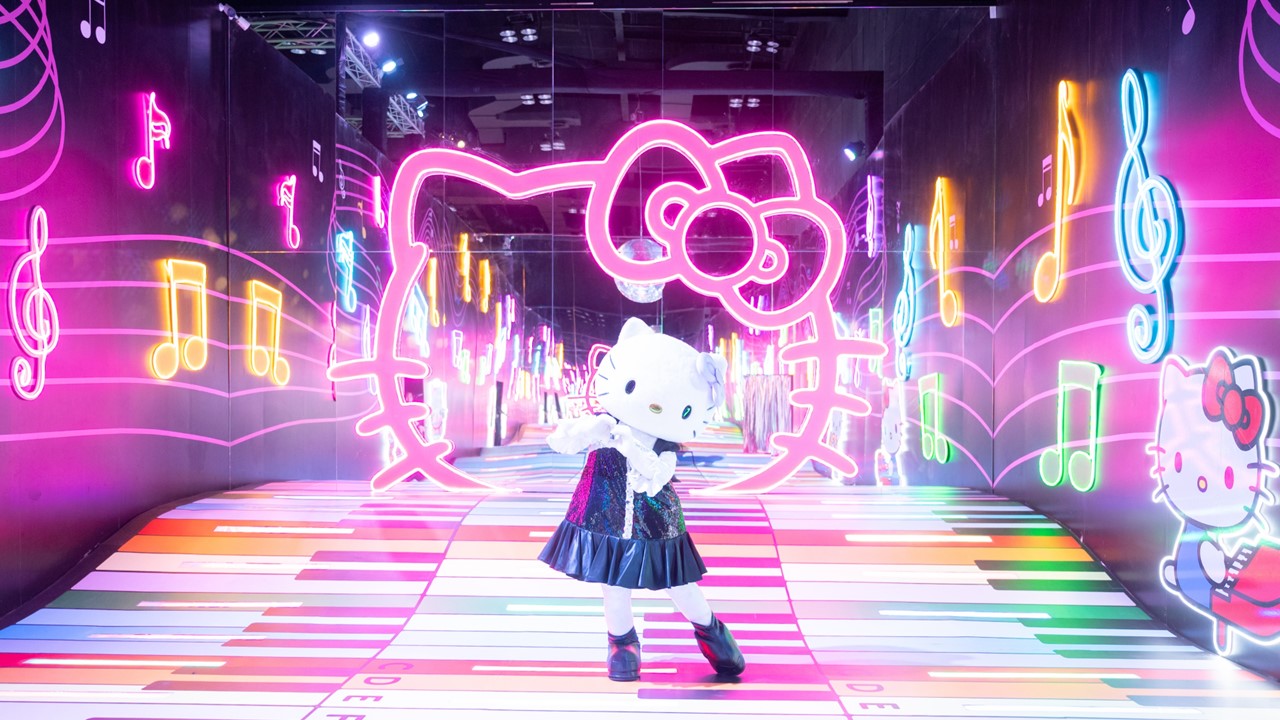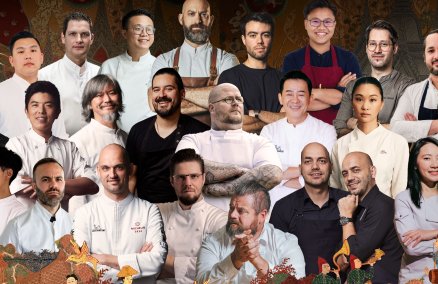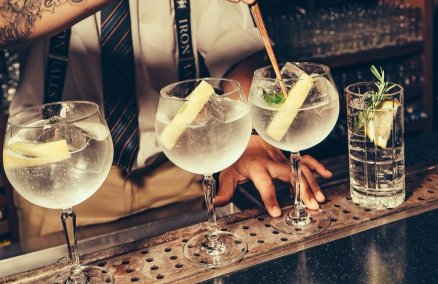One of the city’s most visited retail stores is now home to arguably its cutest immersive event, Hello Kitty Exhibition: Celebration of Friendship and Sanrio Characters: Funtastic Exhibition. The event, which has already been melting hearts on Instagram for the past month, takes visitors on a light-soaked journey through the world and 50-year history of Hello Kitty. To date, this is the single largest Sanrio exhibition to ever be held in Bangkok, and includes visual, installations, kaleidoscopes, light mapping displays, and interactive art pieces that are, as we mentioned before, driving fans into a frenzy on social media.
The event by and large is a celebration of Hello Kitty’s 50th anniversary and is a collection of Sanrio's top five most beloved and adorable characters, all gathered in one place. The occasion marks the creation of the first Hello Kitty character, known as White Kitty, in 1974, which became a global sensation quickly thanks to its cute pointed ears and red bow hair clip—leading many to speculate that the character was modeled after a Japanese female bobtail cat. Sanrio has said in the past that it sees the Hello Kitty brand as a symbol of friendship, which they hope to help foster among people around the world. It also helps explain the exhibition’s naming scheme.
Hello Kitty: The Origin Story and Lore
If you’re not familiar with the Hello Kitty universe, it might be helpful to brush up before going to the exhibition.
The original Hello Kitty character was created by Yuko Shimizu in 1974. In an interview with the BBC, the artist claims it was inspired by her childhood and specifically a moment early in life when her father gifted her a white kitten as a birthday present. Surprisingly, it took Shimizu just a few days to complete the design. At the time, according to Shimizu, her assistant helped seal the deal by exclaiming that the side profile of the design was incredibly cute. This ultimately led to the very first Hello Kitty product, a vinyl coin purse with the character’s figure emblazoned on the side. None of the original purses are known to be in public hands, but replicas of the original product are still popular with fans.
By 1976, two years after the character’s creation, the Hello Kitty franchise had become heavily popular across the world. The development of the character and the world around them had also developed significantly. The official lore of the first character goes like this: she is from the suburbs of London, has a height of “five apples” and a weight of “three apples,” which explains why apple motifs often accompany the franchises designs and products. The character also has a twin sister, Mimmy, who is fond of baking and learning about English, music, and art.

To date, Sanrio has made about 450 individual characters in the franchise. Some of the most popular include My Melody (1975), described as an “honest, good-natured girl”; Kuromi (2005), a black rabbit; and Hapidanbui, which is a unit of six characters in the Sanrio universe, including Pochacco, Tuxedosam, Keroppi, Acrobat Badtz-Maru, Hangyodon, and Ahirunopekkle. The unit’s stated goal is to spread happiness throughout the world, often times through performances as a band. While some of the characters in the unit are longstanding, like Bad Badtz-Maru that was created in 1993, the unit itself was only launched to the public in 2020.
One of the hallmarks of the Hello Kitty franchise over the past 50 years has been the brand’s staying power in the coveted younger demographics. The brand’s second-ever character, My Melody, released just a few years after the first White Kitty, but remains massively popular among Gen-Z customers. My Melody was also juxtaposed against an antagonist of sorts during the series, Kuromi, who is portrayed with a black, two pointed ear jester hat and sports a mischievous look—but still cute, as with everything in the series.
The Hapidanbui unit includes some of the most beloved and longest running characters in the Sanrio universe: Bad Badtz-Maru (1993), a brown male penguin with spikey hair and the vocalist of the Hapidanbui group; Tuxedosam, a stylish young penguin from Antartica’s tuxedo island; Hangyodon (1985), a fish-like character with arms and legs born under Halley’s Comet; Pochacco (1989), a white dog with long flappy ears known for his sporty and playful personality; Keroppi (1988), a frog that lives in a place called Donut Pond; and Pekkle (1989), a gentle, kind-hearted duck that loves to dance.
The Exhibitions at Central World
That exhaustive lore is only a sample of what you will find at the Central World exhibition. The show itself is split into two large exhibitions: Hello Kitty Exhibition : Celebration of Friendship and the Sanrio Characters Funtastic Exhibition. Each has unique experiences that are independent of one another.
First, at the Hello Kitty exhibition. This exhibit will take you on a nostalgic journey, reintroducing Hello Kitty through her favorite activities, such as baking and playing the piano and showcasing the evolution of the original White Hello Kitty design over the years.
Inside the exhibition hall you will find several divided rooms, each with their own interactive technology or display that you can touch. Obviously, it’s also a must to bring a camera along, as many of the set pieces are designed with social media in mind. You’ll find the Hello Kitty character in all kinds of different settings, like Japan wearing a kimono and sitting underneath sakura trees. As to be expected, one of the installations shows the character wearing a traditional Thai outfit, meant to showcase the strong relationship between Thailand and Sanrio.

The next exhibition, which does require a different ticket, is the Sanrio Characters Funtastic Exhibition, this is where you get to explore the other characters in the Sanrio universe and their worlds, like Kuromi, My Melody, Pochacco, Tuxedosam, Keroppi, Acrobat Badtz-Maru, Hangyodon, and Ahirunopekkle. Just like the Hello Kitty-focused exhibition, this area splits the rooms into character specific enclaves with unique interactive elements. One example is the room for Kuromi, the antagonist to My Melody, where visitors embark on a journey through a dark and mysterious forest looking for clues of Kuromi’s whereabouts as you travel. You can also spend some time checking out My Melody’s cozy home, a recreation of the character's home with plenty of trees and lush greens—there is also an interactive floor, but we won’t spoil that part. This part of the exhibit will also see you traveling through colorful corridors with characters popping out from all sides—and plenty of photo opportunities to go around.
After all the jaunting around and photo taking, you are probably going to want to pick up some merch or swag. Right outside the exhibition where you will find a special Hello Kitty shop, where you can buy all manner of merchandise, like bags, hats, drinking glasses, and licensed art toys from the likes of Moshi Moshi, Central Department Store, and many others. There are also photo booths to hop in and take a few snaps with your crew. Next to the shop is the Casa Lapin cafe, where you can buy themed drinks.
Where to Find it and How to Buy Tickets
The exhibition is located next to the restaurant Sushiro on the 7th floor of Central World, making it a prime location for a day or evening out.
The event is open daily from now until November 10, and entrance opportunities are divided into one hour sessions starting at 11:30am and continuing until 7:30pm with the hall closing at 8:30pm.
You can find
tickets online here, which are priced at B590 per session. If you are going to attend more than one session, consider buying a flat rate ticket (B1,100), which grants you access to two different sessions (remember that each zone counts as a session, so if you want to see both you need tickets for both).
















